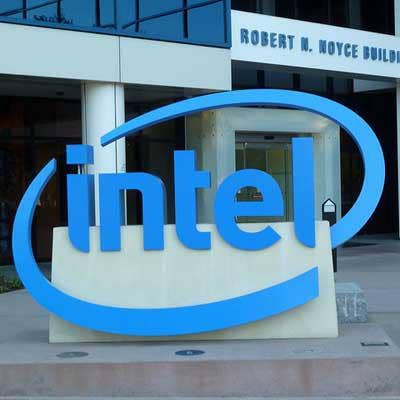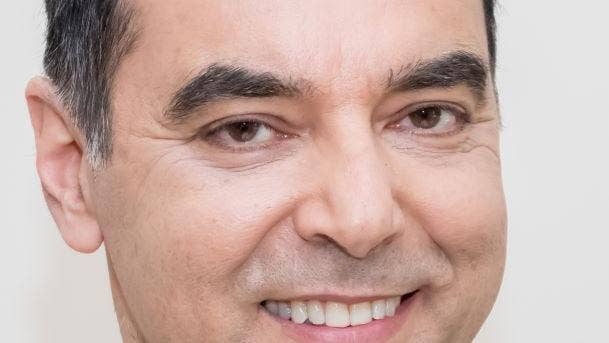Intel To Take Mobileye Public: 5 Big Things To Know
The semiconductor giant is undergoing another major organizational change under CEO Pat Gelsinger with the announcement that Intel plans to take its Mobileye public in 2022. Here are the most important things to know about Intel’s IPO plan for Mobileye.

Changing Lanes Once Again
With Intel’s announcement that it will take Mobileye public, Pat Gelsinger is making yet another major change to the chipmaker after becoming CEO 10 months ago.
It has been a long road for Mobileye, the Intel-owned provider of driver-assistance and autonomous driving solutions that was founded in 1999, went public in 2014 and is now set to become a publicly traded company once again more than four years after being acquired by Intel in 2017.
[Related: Intel Reorganization: 8 Big Changes Made Under Pat Gelsinger]
What follows are five big things you should know about Intel’s plans to take Mobileye public, including Wall Street’s initial reaction as well Mobileye’s portfolio, revenue and leadership team.

Intel’s Plan To Take Mobileye Public
Intel said on Monday night that it plans to take Mobileye public in mid-2022 through an initial public offering of newly issued Mobileye stock.
The Santa Clara, Calif.-based chipmaker said this action will “unlock the value of Mobileye for Intel shareholders” and allow the automotive tech business to build upon its “successful track record” and serve an expanded market.
When Mobileye becomes a publicly traded company, it will include Moovit, which Intel acquired for $900 million in 2020, as well as Intel teams that have been working on lidar and radar technologies.
Intel currently owns all Mobileye shares, and it said it will retain a majority ownership of the company following the IPO. The chipmaker emphasized that it has “no intention of spinning off or otherwise divesting its majority ownership interest.”
The two companies said intend to continue to work together after the IPO. Intel said it has a long-term commitment to the automotive market with several recently announced programs, including the Intel Foundry Services Accelerator and dedicated manufacturing capacity for automakers.
While Intel is intent on making Mobileye public again, the chipmaker said the IPO, its conditions and ultimate timing are pending and subject to market conditions.

Initial Reaction On Wall Street
Wall Street reacted to Monday night’s news favorably, prompting Intel’s stock price to increase by 3.10 percent by market close on Tuesday.
That brought Intel’s stock price to roughly $52.67 per share. It’s been a bit of a tumultuous year for Intel’s market value, with the company’s stock reaching a high of $68.26 per share in April before plummeting to $53.26 a month later.
The appointment of Pat Gelsinger as Intel’s new CEO in February has generally created a sense of optimism about the company’s future. But shareholders haven’t been completely sold on Gelsinger’s comeback plan to make Intel the “unquestioned leader” in the semiconductor industry once again.
One issue that shareholders have with Gelsinger’s plan is the cost of the new IDM 2.0 strategy, an evolution of Intel’s integrated device manufacturing model.
Intel CFO George Davis told investors in October that the company is forecasting capital expenditures of $25 billion to $28 billion in 2022 “in alignment” with IDM 2.0, with the low end representing roughly one-third of the $74 billion Intel has forecasted for revenue next year.
Intel has warned that these large investments in manufacturing capability will weigh down on margins over the next couple years, but Gelsinger said these investments will eventually bring about a “multiyear recovery” of margins when it allows Intel to leapfrog competitors.

Mobileye’s Portfolio, HQ And Employee Count
Headquartered in Israel, Mobileye employees 1,700 people, and its technologies span three areas: automated driving, advanced driver-assistance systems and mapping.
At the center of these technologies is Mobileye’s EyeQ system-on-chip, which performs “complex and computationally intense” vision processing while maintaining low power consumption for driver-assistance and self-driving systems. The company’s fifth-generation EyeQ chip supports fully autonomous vehicles, also known in the industry as Level 5 autonomy.
Another critical aspect of Mobileye’s portfolio is its Road Experience Management mapping technology, which “compiles crowdsource mapping data” from vehicles equipped with EyeQ chips. Another important part of the portfolio is Mobileye’s Safety mathematical model for automated vehicle safety, which serves a “technology-neural model and a transparent framework for the regulatory endeavor of building an industry standard for safety,” according to Intel.

Mobileye’s Leadership Team And History
Intel said Mobileye’s executive management team will remain in place following the IPO, with co-founder Amnon Shashua (pictured above) continuing as the company’s CEO.
The other members of Mobileye’s executive management team are Chief Legal Officer Liz Cohen-Yerushalmi, Executive Vice President of Products and Strategy Erez Dagan, Executive Vice President Nir Erez, Executive Vice President of Research and Development Gaby Hayon, CFO Anat Heller, COO Kobi Ohayon, Executive Vice President of Engineering Elchanan Rushinek, Executive Vice President of Government Affairs and Data Products Elad Serfaty and CTO Shai Shalev-Shwartz.
Shashua founded Mobileye in 1999 with Ziv Aviram, though Aviram left Mobileye when the company was sold to Intel in 2017 for $15.3 billion. Shashua and Aviram founded another company together, OrCam, which focuses on making portable AI devices for visually impaired people. Aviram is now the company’s sole CEO after the two previously co-led OrCam.
Shashua is an expert in computer vision and machine learning and holds the Sachs Chair in computer science at the Hebrew University of Jerusalem, where he is based.
He has a bachelor of science in mathematics and computer science from Tel Aviv University, a master of science in computer science from Weizmann Institute of Science and a Doctor of Philosophy in brain and cognitive sciences from MIT.

Mobileye’s Revenue And Customer Wins
Intel’s confidence about Mobileye’s future as a publicly traded company is supported by the fact that business has been better than ever for the automotive tech provider.
Pat Gelsinger, Intel’s CEO, said, “Mobileye has achieved record revenue year-over-year with 2021 gains expected to be more than 40 percent higher than 2020.” Mobileye’s full-year revenue in 2020 was $967 million, which means the company expects Mobileye revenue to reach at least $1.3 billion next year.
In the third quarter of this year, Intel said Mobileye revenue for the period was up 39 percent year-over-year to $326 million. While the pandemic took a hit on Mobileye’s revenue in the second quarter of 2020, it’s been growing in the double digits every quarter ever since, except for the second quarter of 2021, when revenue grew 124 percent year-over-year, representing a major recovery.
Intel’s bullishness about Mobileye’s future is also prefaced on the fact that semiconductors are expected to represent 20 percent of a premium vehicle’s total bill of materials by 2030, according to joint research by Roland Berger, McKinsey and Intel.
In 2021, Mobileye shipped its 100 millionth EyeQ system-on-chip, Intel said. The company also secured 41 advanced driver-assistance systems program wins with over 30 automakers this year. In addition, Mobileye is notching customer wins for mobility-as-a-service programs that are set start in 2023.
On the autonomous driving side, Mobileye revealed its production-ready robo-taxi this year, and it has won multiple deals to provide chips and solutions for self-driving systems in consumer and business-to-business production designs starting in 2024.